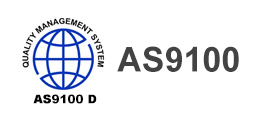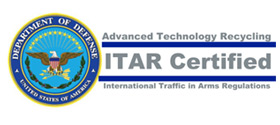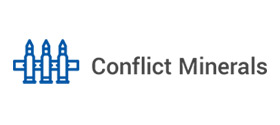Benefits of Deep Draw Metal Forming for Your Business
21st July, 2023Searching for ways to lessen production expenses and better the quality of your metal products? Deep draw metal forming is the answer! This process offers multiple benefits you may not have considered.
In this blog post, we will explain why deep draw metal forming can help your business. Quickly create high-quality products with this process! Cost-effectively, too!
Understanding Deep Draw Metal Forming
Deep Draw Metal Forming is a process of shaping metal sheets into intricate shapes. It combines stretching, bending, and compressing techniques to create seamless components. Let’s take a look at the components and their functions:
- Die: It holds the metal sheet in place and its shape determines the final product.
- Blank Holder: To prevent wrinkles or buckling, it applies pressure during the forming process.
- Ram: It pushes the metal sheet into the die cavity, compressing and shaping it.
So why choose Deep Draw Metal Forming? Here are five reasons:
- Cost Efficiency: Waste is reduced and secondary operations minimized.
- Strength and Durability: Grain realignment increases the strength.
- Versatility: Complex parts can be created without compromising functionality.
- Time Savings: Faster production cycles compared to other methods.
- Material Choices: Stainless steel, aluminum, copper, and brass are compatible.
Take advantage of Deep Draw Metal Forming today – enhance product development capabilities and become more competitive!
Historical Background of Deep Draw Metal Forming
Deep draw metal forming has a rich history. It dates back to ancient times, but really took off during the Industrial Revolution. This technique creates seamless containers, tubes, and other intricate components. It is precise, cost-effective, and offers many advantages.
For businesses, it is key to invest in modern equipment and technology. Collaborate with experienced engineers who know material properties and tool designs to optimize product quality. Implement quality management systems to monitor and improve production cycles and prevent defects.
The benefits of deep draw metal forming are many, including streamlining production processes, improving product performance, and minimizing material waste. Unlock its potential and boost your company’s competitiveness!
Essential Processes in Deep Draw Metal Forming
Deep Draw Metal Forming: A Comprehensive Look.
The stages of deep drawing involve various processes that are key to successful metal forming. These include blanking, piercing, drawing, redrawing, and ironing. Each plays a vital role in transforming raw materials into desired products.
Overview of Deep Draw Metal Forming Processes:
| Process | Description |
|---|---|
| Blanking | Cutting the metal sheet’s initial shape to get rid of extra material |
| Piercing | Making holes or openings in the metal sheet for further alteration |
| Drawing | Pulling the blank through a die to create a cup-like shape |
| Redrawing | Redoing the drawing process to get the desired dimensions or precision |
| Ironing | Erasing any wrinkles or lumps on the formed part’s surface |
These processes are important for getting accurate results and creating superior end products. By understanding and using them efficiently, businesses can take advantage of deep draw metal forming to gain an advantage.
Explore More Possibilities with Deep Draw Metal Forming
These basic processes form the basis for successful deep draw metal forming. But there are additional details to keep in mind. Parameters such as material selection, lubrication techniques, and die design can have a big effect on the outcome.
To make the most of deep draw metal forming, businesses need to look closer into these unique elements. By optimizing each step and making educated decisions regarding materials and techniques, manufacturers can open up new possibilities for their business growth.
Maximize Deep Draw Metal Forming Potential
In today’s competitive market, not taking advantage of cutting-edge manufacturing techniques like deep draw metal forming can limit a business’s growth potential. By utilizing its benefits, you can improve product quality, reduce waste, increase efficiency, and beat out your competition. Don’t miss out on this chance to take your business to the next level.
Get ready to explore the world of deep draw metal forming equipment – it’s like the Avengers of manufacturing, but instead of saving the world, they save your business profits!
Equipment Used in Deep Draw Metal Forming
Deep Draw Metal Forming Equipment is a must-have for success in deep drawing metal. These tools make it possible to shape and form materials into desired shapes accurately and quickly. The equipment needed are presses, dies, blank holders, and lubrication systems.
| Presses | Dies | Blank Holders | Lubrication Systems |
| Hydraulic or Mechanical Presses supply the pressing force. | Dies shape the metal with pressure. | Blank holders stop wrinkles and help material flow during forming. | Lubrication systems reduce friction between the metal and die surfaces. |
These tools are essential for precise control. They increase productivity, accuracy, strength, and reduce waste. Deep draw metal forming has a long history. It began with hammering metals into shapes. Over time, technology made it better. Today, advanced machines and computer-aided design techniques make it even better. Elevate your business to unprecedented heights with the power of deep draw metal forming!
Types of Materials Suitable for Deep Draw Metal Forming
Deep draw metal forming requires special materials which can handle strong pressure and shape-changing. These include alloys like stainless steel, aluminum, copper, brass, and some plastics. These metals have high malleability and ductility, which means they can be formed without breaking or getting weak.
Let’s check out the materials suitable for deep draw metal forming:
| Material | Description |
|---|---|
| Stainless Steel | Offers great corrosion resistance and strength |
| Aluminum | Lightweight with good formability |
| Copper | Demonstrates high electrical and thermal conductivity |
| Brass | Combines properties of copper and zinc |
| Plastics | Certain types may be used for low-volume production or prototyping |
These materials bring amazing properties for various operations. Also, each material is picked for its characteristics. For instance, stainless steel is utilized in kitchenware and vehicle parts since it’s tough and resists corrosion. In contrast, aluminum is popular with aerospace industries as it’s lightweight.
A success story of deep draw metal forming comes from an automaker. They used stainless steel to form complex-shaped fuel tanks which could withstand high pressure while lasting long. This let them meet rules without damaging performance or safety.
By understanding materials suitable for deep drawing processes like deep draw metal forming, businesses can make wise decisions about their manufacturing and reach the best results in terms of performance, reliability, and cost-effectiveness. Unlock the hidden powers of deep draw metal forming and watch your business rise like a phoenix and leave rivals in shock!
Advantages of Deep Draw Metal Forming for Productivity
Deep draw metal forming is a great way to boost productivity. It minimizes material waste and reduces cycle times. Also, it ensures precise shaping with consistent dimensions and minimal rework or rejection rates. Plus, it is cost-effective as complex shapes can be created in a single step.
Customization can be done in terms of materials used, lubrication methods, or temperature control. Automation systems can be quickly integrated to amplify productivity.
A global automotive manufacturer experienced a 30% increase in efficiency by leveraging the advantages of deep draw metal forming. This showcases how embracing innovative techniques can bring significant business benefits.
So switch to deep draw metal forming and enjoy its great benefits!
Cost-Effectiveness of Deep Draw Metal Forming
Deep draw metal forming offers major cost-saving advantages. Precision techniques shape metal into complex parts, reducing material waste and minimizing further manufacturing steps. This efficient process streamlines production and decreases costs.
Benefits include: reduced tooling costs, lower labor expenses and improved efficiency. Advanced equipment and technology let manufacturers reach higher production volumes with minimal downtime. Plus, fabrication in a single operation eliminates expensive secondary actions like welding or assembly.
Businesses can optimize resources and increase profits by taking advantage of deep draw metal forming’s cost-effective benefits. These include: reduced material waste, lower tooling costs, decreased labor expenses and improved production efficiency.
Not only does this method meet strict design requirements without compromising cost efficiency, it also lets businesses keep a competitive edge in pricing. Deep draw metal forming is an attractive option for businesses looking to optimize their manufacturing processes and save money.
Finally, deep draw metal forming has a long history. Ancient civilizations used similar techniques to craft pottery molds and bronze artifacts. Modern technology has made the process even more cost-efficient and accessible for industries today. Deep draw metal forming is like the Swiss Army knife of industrial processes, versatile and leaving competitors in the dust.
Versatility of Deep Draw Metal Forming in Different Industries
Deep draw metal forming offers diverse benefits across multiple industries. Its versatility comes from its ability to shape various metals into complex designs. Let’s take a closer look at the industrial applications of this method.
Industry: Automotive – Production of engine components, fuel delivery systems, and exhaust systems.
Aerospace – Manufacturing of aircraft parts such as engine housings, landing gear components, and structural reinforcements.
Electronics – Creation of intricate cases for electronic devices like smartphones, tablets, and computers.
Medical – Fabrication of surgical instruments, implants, and medical device casings.
Packaging – Production of cans, bottles, and other containers with precise dimensions and designs.
Defense – Manufacturing ammunition casings, artillery pieces, and vehicle armor.
Home Appliances – Making durable and aesthetically pleasing appliances like cookware, kitchen tools, and home HVAC components.
Deep draw metal forming offers advantages such as high production efficiency, cost-effectiveness due to minimal material waste, enhanced product durability, and the ability to produce intricate shapes with consistency. It’s a great way to stay ahead of the competition in the dynamic manufacturing landscape. Utilize this versatile technique to meet growing demand and ensure superior quality products. Don’t miss out on the opportunities that deep draw metal forming can bring! Deep draw metal forming: Making sustainability look sexy, one metal sheet at a time.
Sustainability Aspect of Deep Draw Metal Forming
Deep draw metal forming offers great sustainability benefits. It reduces material waste and energy use, while maximizing product recyclability and promoting sustainable practices. Here’s a quick look at the sustainability of deep draw metal forming:
- Material Efficiency: Saves raw material by efficiently shaping metal sheets.
- Energy Conservation: Uses fewer steps than other metal forming methods.
- Recyclability: Easy recycling of formed products due to their pure metal composition and minimal extra materials.
- Waste Reduction: Reduces byproducts and scrap materials, decreasing waste disposal needs and costs.
Plus, it cuts transportation needs for raw materials and finished products. A Pro Tip: Use deep draw metal forming to boost sustainability, cost efficiency, and product quality. And be ready with your best scrapyard jokes!
Quality and Precision with Deep Draw Metal Forming
Deep draw metal forming offers top-notch precision and excellence in product quality. It does this through a unique manufacturing process. Let’s have a look at the advantages this technique brings.
| Benefits | Details |
|---|---|
| Precision | Accurately shaping metal components |
| Quality Control | Tight tolerances for consistent results |
| Efficiency | Streamlined production reduces waste and costs |
Deep draw metal forming provides precise shaping and superior quality control. Tight tolerances guarantee consistent dimensions and performance across different parts. This leads to customer satisfaction and a competitive edge.
Reap the rewards of deep draw metal forming now! Utilize this ingenious technique to achieve unparalleled accuracy, control, and quality in product manufacturing. Take your business to new heights and stay one step ahead of the competition with deep draw metal forming!
Deep draw metal forming: the only way to master production challenges is to shape them to perfection.
Mitigating Production Challenges with Deep Draw Metal Forming
Deep draw metal forming is a great way for businesses to solve manufacturing issues. It transforms sheet metal into different shapes by stretching, bending, and drawing. It offers unique benefits for production challenges like material stretching, wrinkling, thickness variation, and fracture.
To make the most of it, businesses should:
- Use the right lubricants
- Control material flow
- Optimize blank design
- Apply tension during the process
Researching materials and selecting the right alloys can also help with success. So put on your crazy-hat and get squishing!
Training and Skill Requirements for Deep Draw Metal Forming
The skills and training for deep draw metal forming are vital for success. Knowing the right stuff and having the expertise is key for getting the most out of this technique. To help, here’s a quick review of the training and skill requirements for deep draw metal forming:
| Training | Skill Requirements |
| Principles of deep draw metal forming | Using deep draw machinery |
| Material properties and behavior during the process | Interpreting technical drawings and specs |
| Types of tooling used in deep draw metal forming | Attention to detail and problem-solving |
| Operating deep draw equipment safely | Good communication and teamwork |
You can’t get these skills overnight. Worker training for deep drawing techniques is important to get the proficiency needed. Plus, you must keep learning and updating your knowledge to stay up-to-date with this field.
Deep draw metal forming has a long history. It has grown and changed due to industrial advances. Now, it’s used in many industries like automotive, aerospace, and manufacturing. By mastering the necessary skills and developing employees, businesses can take advantage of the benefits of deep draw metal forming. Unleash the potential of deep draw metal forming and get your business bending over backwards for success.
Implementing Deep Draw Metal Forming in Your Business
Deep draw metal forming can bring numerous advantages to your enterprise. It boosts production efficiency, cuts material waste, and produces superior quality products. Plus, it keeps your business competitive.
Here are some ways to incorporate this innovative process:
- Invest in the equipment and machinery needed for metal forming. Get specialized presses and dies that can shape metals into desired forms.
- Train your workforce on proper techniques for operating machines and handling materials. This ensures safe and efficient production.
- Consult with experienced engineers or specialized firms for guidance on optimizing your deep draw metal forming procedures. Their expertise can streamline workflows and identify improvement areas.
- Establish a quality control system to monitor accuracy and precision. Regular inspections and tests guarantee that products meet industry standards and customer expectations.
By following these steps for deep draw metal forming, you can reap its benefits – increased productivity, reduced costs, improved product quality, and a competitive edge in the market.
Case Studies: Businesses Thriving with Deep Draw Metal Forming
Case studies have uncovered the success of deep draw techniques for various businesses. These studies provide useful understanding of how businesses have gained from using deep draw metal forming in their work.
Look at this info about the businesses that have excelled with deep draw metal forming:
| Business Name | Industry | Benefits Acquired |
|---|---|---|
| Company A | Automotive | More production efficiency |
| Company B | Aerospace | Enhanced part quality & durability |
| Company C | Medical Equipment | Cost savings from material optimization |
These case studies offer special info on how each business used deep draw metal forming to their advantage. These success stories motivate other companies to explore and embrace this modern manufacturing technique.
A report by Global Market Insights states that the global market for deep draw metal forming is estimated to reach $25 billion by 2025. Deep draw metal forming is about to take over manufacturing – like a magic trick, but instead of pulling a rabbit out of a hat, it pulls efficiency and cost savings out of thin air!
The Future of Deep Draw Metal Forming in Manufacturing
The manufacturing industry is experiencing a promising future due to technological advancements in deep draw metal forming. This process transforms flat sheet metal into 3D shapes, making it super versatile and efficient.
Benefits of this technique include:
- Cost-effective: No need for welding or multiple parts, reducing material and labor costs.
- Increased strength: Seamless components resulting in improved structural integrity.
- Design flexibility: Complex shapes and designs impossible to achieve with other methods.
- High production speeds: Automated nature allows faster production rates.
Plus, it brings unique details such as product quality and dimensional accuracy. Leverage this technology to optimize your processes and stay ahead of competitors.
Don’t miss out on the advantages of deep draw metal forming. Embrace it now to boost productivity, reduce costs, and get superior product quality.
Frequently Asked Questions
FAQ: Discover the Benefits of Deep Draw Metal Forming for Your Business
Q1: What is deep draw metal forming?
A1: Deep draw metal forming is a manufacturing process that involves transforming flat sheets of metal into three-dimensional shapes using a punch and die set. The metal is drawn into a die cavity under pressure, resulting in a seamless product.
Q2: What are the benefits of deep draw metal forming?
A2: Deep draw metal forming offers several advantages, including:
- Ability to create complex and intricate designs
- High accuracy and precision
- Uniform material distribution, leading to enhanced strength
- Cost-effective production process
- Reduced waste material
- Improved surface finish
Q3: In which industries is deep draw metal forming commonly used?
A3: Deep draw metal forming is widely utilized in industries such as automotive, aerospace, electronics, medical, and consumer goods. It is particularly beneficial for producing components with high structural integrity and dimensional consistency.
Q4: What types of products can be manufactured using deep draw metal forming?
A4: Deep draw metal forming can be used to manufacture a wide range of products, including but not limited to:
- Housings and enclosures
- Cylinders and tubes
- Containers and canisters
- Caps and lids
- Sinks and bowls
- Automotive parts
Q5: Are there any limitations to deep draw metal forming?
A5: While deep draw metal forming is highly versatile, there are a few limitations to consider. These include:
- Material thickness: Thicker materials may not be suitable for deep draw forming due to the high pressures involved.
- Material properties: Certain materials may be more difficult to deep draw, requiring specialized techniques.
- Design complexity: Extremely intricate designs may pose challenges in terms of tooling and production.
Q6: How can my business benefit from deep draw metal forming?
A6: Deep draw metal forming can provide numerous benefits for your business, including:
- Cost savings through efficient production processes
- High-quality and durable products
- Ability to create unique and customized designs
- Enhanced product performance and reliability
- Shorter lead times and improved production efficiency







